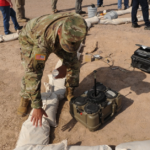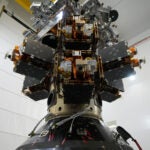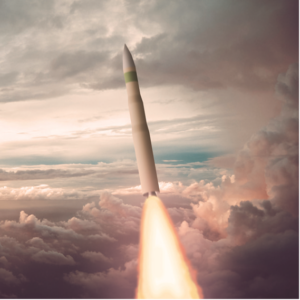
NATIONAL HARBOR, Md.–The U.S. Space Force requested $8.2 billion for space control in fiscal 2026, and Chief of Space Operations Gen. B. Chance Saltzman said on Tuesday that funding trend lines are headed up.
“In the collection of money that’s gonna be available to us to buy [space control] equipment, it’s more than it was,” he told reporters on Tuesday at the Air Force Association’s annual Air, Space & Cyber conference here. “So, when we say shortfalls, it’s shortfalls in where I’d love to be, but we have to acknowledge that we are getting more, and I’ve put more capacity earlier into space control than we originally had planned two years ago. I think we’re on a positive trend toward building the kind of magazine depth at capacity to address the target sets that are needed.”
The Space Force has discussed three non-kinetic space control and counterspace systems–the L3Harris Technologies‘ [LHX] Counter Communications System (CCS)–a ground jammer introduced in 2004–and its 10.2 and 10.3 “Meadowlands” upgrades; Alabama-based COLSA Corp.’s Bounty Hunter system, a ground-based satellite communications interference detection system, which achieved initial operational capability on Aug. 7, 2020; and the Space Rapid Capabilities Office’s Remote Modular Terminal (RMT) ground-based jammer by Virginia’s Northstrat, CACI International [CACI], and Colorado-based Seed Innovations, LLC.
Space Force’s Space Training and Readiness Command said last year that it had tested RMT.
Last year, then Air Force Secretary Frank Kendall lamented that the Department of the Air Force had scrimped on fiscal 2025 funding for counterspace to deter China because of constraints in the Budget Control Act (Defense Daily, April 30, 2024).














